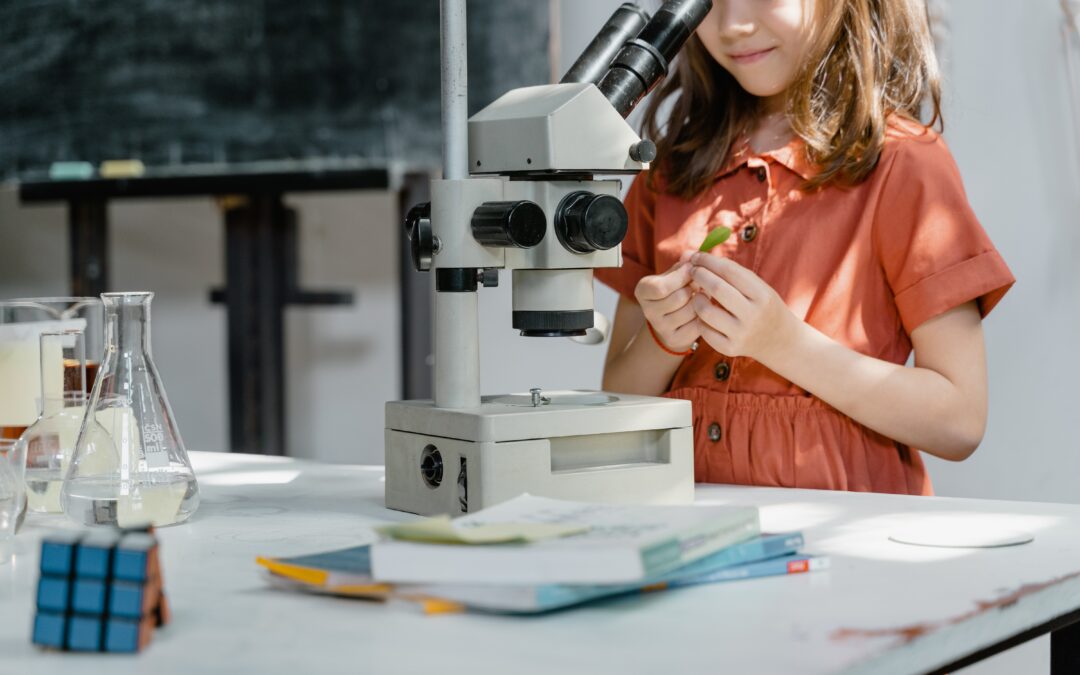Curiosity is truly a magical part of childhood. Everything in the universe, great and small, is new to children. Learning how to navigate their curiosity to learn about the world around them gives children skills they need to explore, discover, and eventually become productive and engaged members of society. At STEMful, we use the scientific method and Science, Technology, Engineering, and Math (STEM) education to help children develop confidence, critical thinking skills, and of course, curiosity that will serve them as they venture into the world.
The Benefits of STEM Learning Experiences
STEM education is at the core of our approach to learning at STEMful (it’s in our name!), and it’s the foundation for every class and program we share with our community.
So, what exactly is STEM education? It’s an approach to education that integrates science, technology, engineering, and math in curricula that create student-centered learning environments.
At STEMful, we believe that a project-based STEM curriculum is a key to helping children prepare for life. Children build confidence as they learn about science through creative expression and hands-on experiences, and can become confident adults who are ready to take on and solve problems in the future.
Learning how to ask questions and investigate, process concepts using logic, collaborate with others, and create solutions to challenges is important for every child. Those experiences provide skills that serve students in any field they choose to pursue.
STEM Education at Every Age
STEM learning doesn’t have to wait until children are school-aged. Young children can benefit from early STEM education, and those experiences and activities can support further learning down the road.
Early STEM education helps children develop skills that will serve them in a variety of learning and living areas, including:
- Collaborative work
- Critical thinking
- Language development
- Memory retention
- Hands-on exploration
Here’s one example of how early STEM learning prepares young children for future educational experiences: Studies have shown that early math skills, which students can learn through STEM learning, lead to higher rates of achievement among kindergarten to 5th-grade students.
STEM Education at STEMful
STEMful offers various classes designed to create fun and educational STEM learning experiences for young children:
- Classes for ages 1.5-5
- Camps for ages 3.5-10
- After School Programs for ages 5-10
In our Toddler STEAM classes, for example, children 1.5-3 years old have adventures in hands-on math and science, as well as enjoying songs and stories that build language comprehension skills.
Children who attend our After School Programs, 5-10 years old, experience STEM learning through a mix between project-based, structured activities and open-ended, play-based exploration. This encourages building dynamic STEAM knowledge, while they have fun!
What is the Scientific Method?
The other component that makes learning at STEMful an exciting and valuable experience for children is our use of the scientific method in our classes, programs, and camps.
Scientists across every discipline use the scientific method to study and learn information about their field. From business owners and entrepreneurs to teachers or technicians, all these scientists seek answers as they build an understanding of their area of study.
Scientists use the scientific method to answer questions and learn about something.
There are five steps in the scientific method learning process:
- Establish a question to be answered or a problem to be solved. For example: “Why does X happen this way?” or “What happens to X when we add Y to it?”
- After asking the question, observe the subject it pertains to. In the sample questions above, that would be X.
- Once you observe the subject and document your findings, propose a hypothesis (or explanation or theory) to answer the question.
- Perform a set of experiments, or tests, to see if the hypothesis is correct.
- Develop a conclusion that summarizes, analyzes, and assesses the results of your experiments.
How We Use the Scientific Method at STEMful
At STEMful, we incorporate the scientific method as part of our learning experience for children at every age and grade level. We lead even our smallest students through activities that employ the scientific method. From asking questions about the world around them and hypothesizing answers to age-appropriate experiments and talking about our findings and results, the scientific method is at the heart of our approach to learning.
For example, students in our Mini STEAMsters class learn science and math through play-based exploration and activities, including exploring the before and after of chemical reactions! Older children in our after school programs, Curiosity Club or Curiosity Explorers, investigate STEAM concepts through the same scientific method steps that professional scientists do!
Enroll Your Little Scientist!
Give your children the benefits of STEM education experiences and learning with the scientific method! There’s something for students of every age at STEMful. From exciting and engaging classes and after-school programs to adventurous STEM camps, we create opportunities to enhance your child’s education and, most importantly, encourage a love of learning with STEM! Visit our Programs page to find the perfect option for your child.

